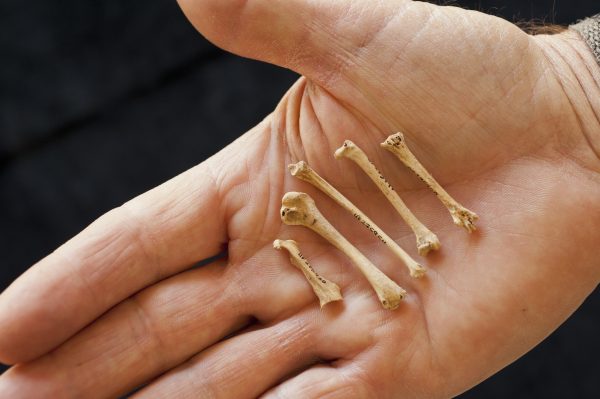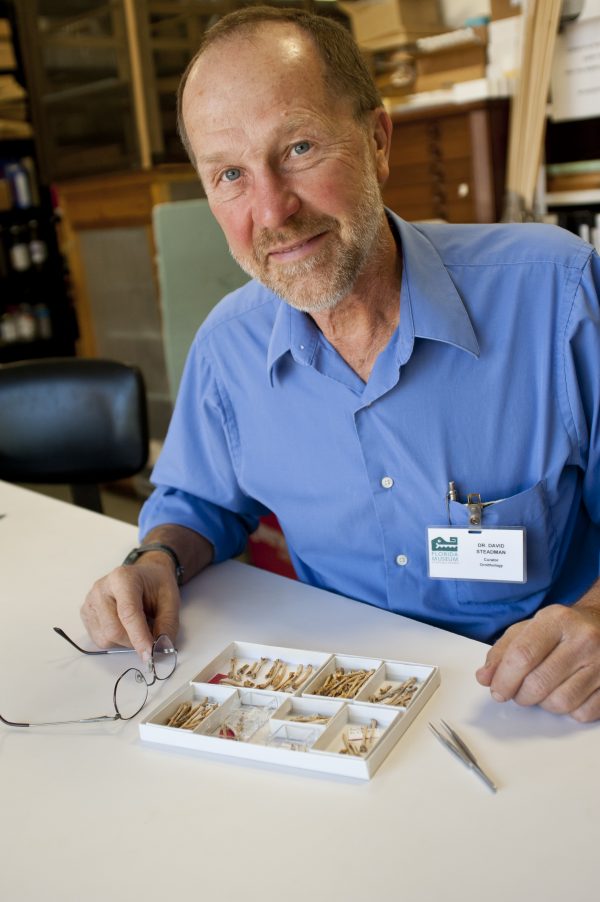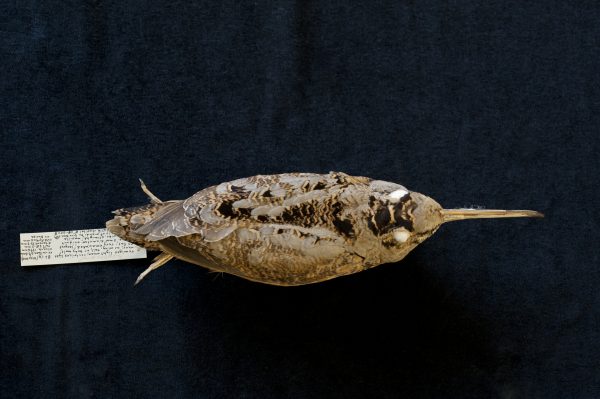A new study of nearly 5,000 Haiti bird fossils shows contrary to a commonly held theory, human arrival 6,000 years ago didn’t cause the island’s birds to die simultaneously.

Florida Museum photo by Kristen Grace
Although many birds perished or became displaced during a mass extinction event following the first arrival of humans to the Caribbean islands, fossil evidence shows some species were more resilient than others. The research provides range and dispersal patterns from A.D. 600 to 1600 that may be used to create conservation plans for tropical mountainous regions, some of the most threatened habitats worldwide. Understanding what caused recent extinctions – whether direct habitat loss or introduction of invasive species – helps researchers predict future ecological impacts. The study was published online in The Holocene March 12 and is scheduled to appear in the journal’s print edition in July.
“People arrive about 6,000 years ago and within a millennium or two, you lose the big, spectacular critters – the ground sloths, the monkeys, the biggest rodents and some of the big extinct birds, like giant owls and eagles,” said lead author David Steadman, ornithology curator at the Florida Museum of Natural History on the UF campus. “We have some bird species from our fossil site that, from a modern standpoint, are just as extinct as the others, but in fact, they almost were able to survive longer. That helps give us a gauge on what the future might bring.”
Researchers used comparisons with modern bones to identify 23 species from the 4,857 bird fossils excavated from Trouing Jean Paul, a cave in southeast Haiti at an elevation of about 6,000 feet. The most common bird species include the Zenaida Dove, the Black Swift, the Least Pauraque, the Hispaniolan woodpecker and a new, undescribed extinct woodcock in the genus Scolopax. Researchers believe the woodcock became extinct between A.D. 1350 and 1800, surviving the first arrival of the Amerindians 6,000 years ago, but dying off following the arrival of Europeans and African peoples in 1492, Steadman said.

Florida Museum photo by Kristen Grace
“When you take a look at what could’ve caused this, it really does just keep pointing to humans,” Steadman said. “I just think it’s habitat loss from people and introduction of non-native, invasive plants and animals. It’s the same thing we’re dealing with in Florida now – who knows what the pythons are going to wipe out in the Everglades.”
Researchers radiocarbon-dated six individual bones from the extinct woodcock to determine the site’s age. Because the locality also includes fossils of frogs, lizards, snakes, bats and rodents, in addition to the Common Barn Owl and Ashy-faced Owl, it was likely a roost where owls deposited boney pellets of their prey, scientists said.
Of the present-day species found at the site, as many as one-third are considered threatened today and four of the 23 total species are no longer found in the area. Their predominant habitat was pine forests, which are mostly disturbed today or entirely cut down for agriculture. The Least Pauraque, a type of nightjar, is now an endangered species that lives in an extremely localized area, Steadman said.
“This gives us some evidence of how drastic the range contraction was of this species – the Least Pauraque not only lived in the mountains, it was common there,” Steadman said. “Within 1,000 years, it’s lost most of its range and most of its population. From the standpoint of evolution, if we want that species to ever have the opportunity to evolve through time, we need to be concerned with time intervals that are measured in centuries and millennia, not just decades.”

Florida Museum photo by Kristen Grace
Jim Mead, professor and chair of the department of geosciences at East Tennessee State University, said the research is important because the direct radiocarbon dating represents a much later time period than the arrival of the first Amerindians.
“What Steadman is finding, more often than not, is that we as people bring in other things with us and indirectly wipe out other animals,” said Mead, who was not involved with the study. “He’s providing background data and I think that’s critical to Hispaniola because you have two countries on that island and they’re quite different culturally and economically, so those countries are going to play different games on the local fauna.”
Mead said it is also significant that Trouing Jean Paul occurs at a high elevation, where human or climate pressures could result in animals finding a “refugia” upslope.
“Typically, a lot of sites are found in lower elevation, or we go to the lower elevations to look at localities we work on,” Mead said. “But Dave is saying, ‘Why don’t we look at these other areas that haven’t really been examined?’ This one cave is a critical one for that. It gives us a 3-D look at environments on an island.”
Oona Takano, who helped sort and identify the specimens as a UF undergraduate student, is a study co-author.